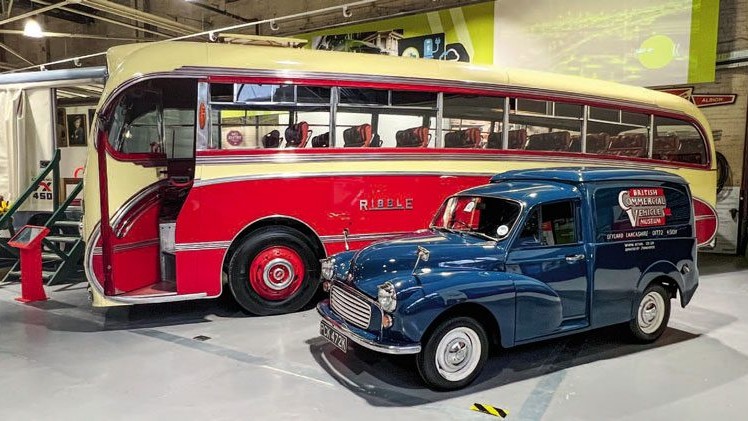
The museum currently has 62 exhibits, ranging in age from 1880 to 2004. Initially, it was 100% Leyland, but today the vehicles (including horse-drawn, steam, petrol, diesel and hybrid) wear various manufacturers’ badges on their grilles. Roughly 35% are owned outright by the museum, while the rest are loaned by private individuals and companies.
Moyes explains that this model works well and allows it to change the exhibits frequently, giving people a reason to make repeat visits.
There is a charge to store vehicles at the museum, including frequent dusting and a biannual inspection. They can be taken out up to twice a year, as long as plenty of notice is given.
Perhaps the museum’s most famous exhibit is the Popemobile. Based on a T45 Leyland Constructor tipper chassis, this is one of two identical vehicles built by Ogle Design and used by Pope John Paul II during his 1982 visit to the UK. Following the failed assassination attempt on His Holiness in 1981, the decision was made to fit the 6×4 24-tonne Constructor with underfloor armour and bulletproof glass. And if the worst should happen, double- drive ensured a quick getaway across the nearest field. That said, nobody thought to provide the driver with any ballistic protection. It was donated to the museum in 1988.

In the early 1930s, there was a serious disagreement on the board at truck manufacturer Foden. Edwin William Foden, the son of founder Edwin Foden, disagreed with his father and brother about the future propulsion of trucks. The company wanted to continue producing steam wagons, while Edwin junior thought diesel was the future. So, he decided to split, taking his son Dennis with him. In 1933, he built his first diesel truck, which was adorned with his name ‘ER Foden and Son’ – or ERF. This first ERF, sold in 1933 to haulier WF Gilbert, takes pride of place in the museum.
In the UK, you need a licence to watch TV, and anyone caught viewing without a licence faces a hefty fine. Helping the BBC hunt down the culprits was a fleet of TV detector vans, which could supposedly detect the use of a television from the roadside. I say ‘supposedly’ because nobody quite knew whether they worked or were just a hoax. Either way, the museum’s 1979 Dodge Spacevan TV detector van is incredibly rare.
The TX450 was a 17.5-tonne technology-demonstrator concept truck developed by Leyland in 1986. Years ahead of its time, it features a digital dashboard display, onboard computer axle-weighing system and rear-view camera. It’s powered by a 165hp Leyland 320 turbocharged engine.
Read more
Visiting the vikings
0 Comments1 Minute
Is California dreaming?
0 Comments17 Minutes
The Foden way
0 Comments7 Minutes
Red-tape resilience
0 Comments12 Minutes









